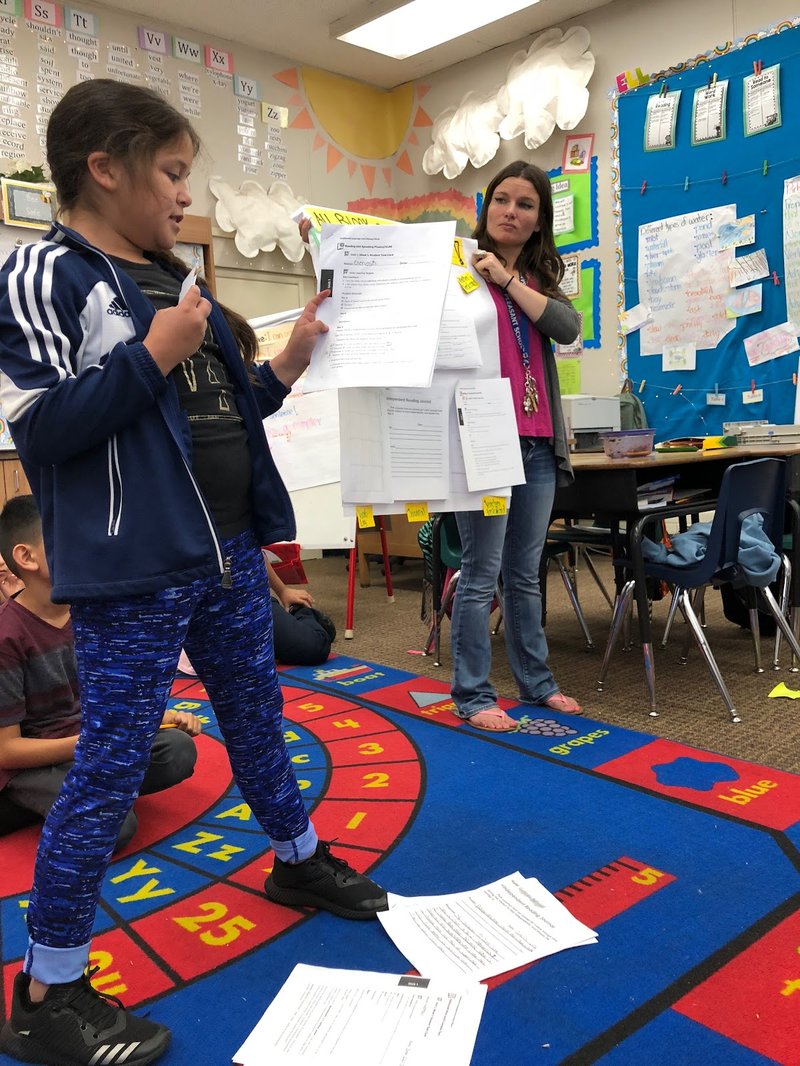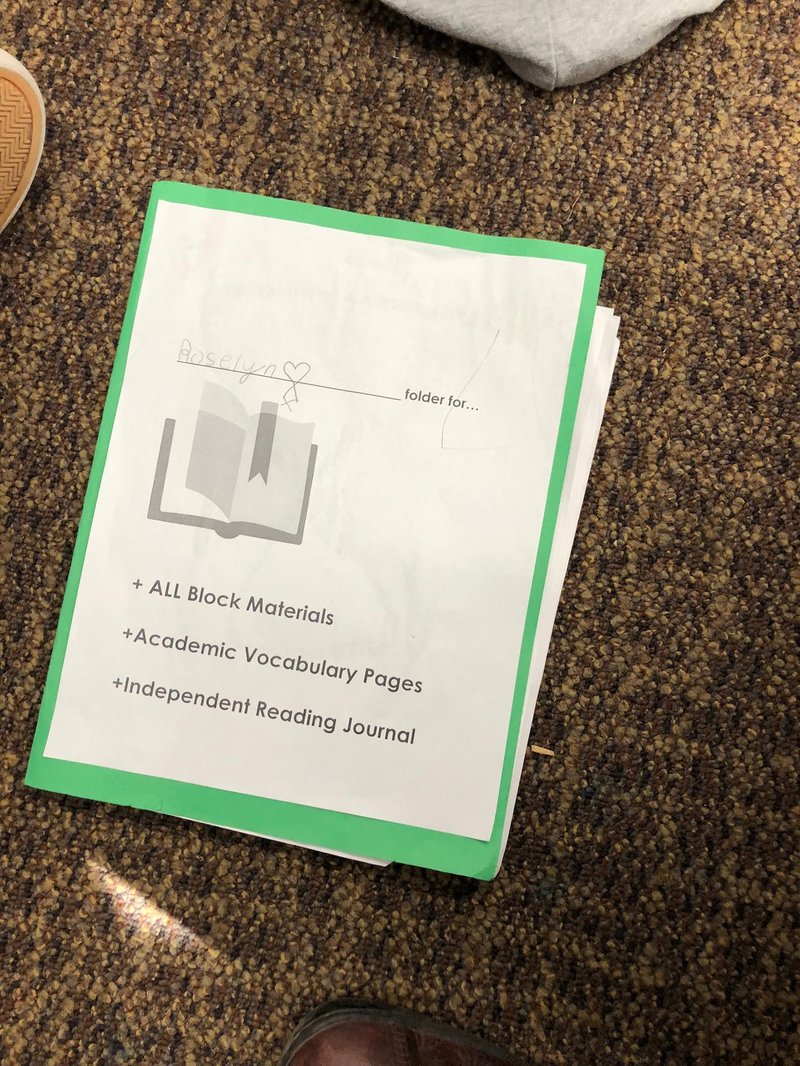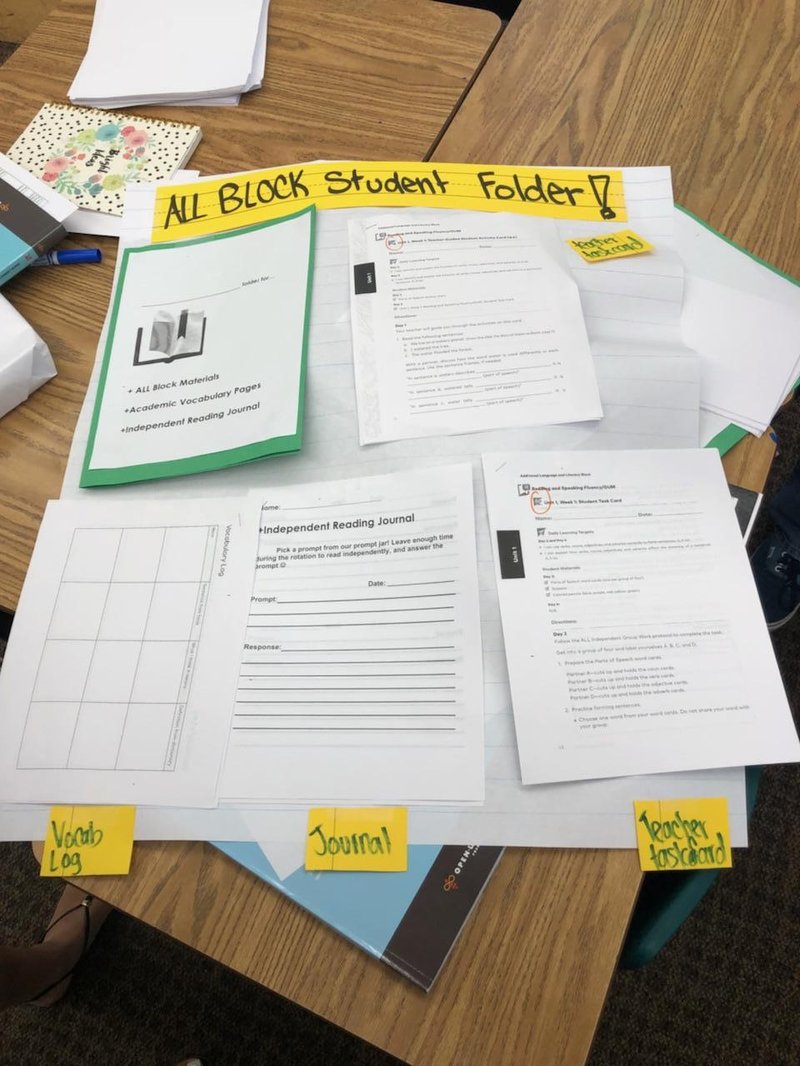 2385
2385
Even in upper elementary grades, it’s not always easy to let go of the reins and allow your students to work independently. But we know that students this age crave—and need—more independence as learners. The Additional Language and Literacy (ALL) Block fulfills this need by giving students time to practice the skills taught during the module lessons while they also focus on character mindsets of perseverance and self-management. The ALL Block’s one-hour of independent practice complements the module’s two-hours of direction content-based literacy instruction. The ALL Block has three units, parallel to the three units of the module. Although most teacher see the value of giving students independent time to apply what they’ve learned in the modules, many find it challenging to manage students and materials effectively so that all students are improving their skills and strengthening the character traits highlighted in the module.
The ALL Block video, “Implementing the 3-5 Additional Language and Literacy (ALL) Block” was filmed at Hollis Innovation Academy in Atlanta, Georgia.
In this post, we will answer the question “How can I manage students and materials during the ALL Block to maximize student learning?” To find out, we consulted Kelsey Meder, a third-grade teacher at Robert Sanders Elementary in San Jose, California, and with EL Education’s very own ELL expert, Kevin Jepson. Here’s what they had to say.

Kelsey and one of her students explaining the ALL Block materials organization to other students and visitors.
EL Education:
How do you set up your room for the ALL Block?
Meder:
It’s important to have three designated areas that students can rotate through:
One area is where the students complete the student task cards. I like to do this on the carpet.
Another area will be where students will work on the teacher-led task card. I do this at the small group table.
The final area is where the students read independently and write in their reading journal I use the classroom library area for this.

The chart to the left of the picture illustrates the designated areas for each rotation and how the students move through the rotations.
EL Education:
How do you set expectations for students’ rotations and work time during the ALL Block?
Meder:
First, I took advantage of the first four weeks, which are designed to set expectations and purpose. The slow rollout really set students up for success when they got started with full rotations in Unit 3.
As I get to know my students, I place them in groups, based on the differentiation the task card provides. I make sure there is at least one student who likes to lead and take charge in each group. I have my students rotate clockwise. Therefore, if they start at the small group table with me, they will then go to the carpet to work with their peers on the student task card, and finish the ALL block hour in the library, reading independently and answering a prompt, or working on the independent reading task card.
I teach my students to rotate in under two minutes. We rehearse and practice not only sitting in the correct area, but also having pencils or books out, and getting to work before the two minutes are up. If this happens, they can receive a large amount of marbles in our marble jar. We play a song that is about two minutes, such as “We Will Rock You” by Queen. They need to be working and focused when the song is over.
I also walk around and check the students’ work during every two-minute musical transition to ensure that they are on task. I check the work from the students working on the student task card, and the students who were in the library, working on their reading journal prompt or their independent reading task card. If I notice a student isn’t focusing or completing enough work, I make a small dot on their paper as a reminder to both of us for later and address with the students as needed if they collect several dots over the week.

Consider using this Accountability sheet, created by EL Education school designers Wanda McClure and Becky Martinez, to guide students’ independent work.
EL Education:
How do you manage all of the papers and materials for the ALL Block?
Meder:
On each Friday before the upcoming week, by following the curriculum and accounting for the time available, I decide what materials I will have my students use for the student task cards and teacher task cards. I prepare these materials on either Friday afternoon or Monday morning. I make sure that I am clear on what needs to be done, so I can explain it accurately to the students during Monday’s Language Arts block. I sometimes require students to complete a certain amount of tasks in order to participate in our fun Friday afternoon activities.
In terms of the vocabulary log and reading journal, I have found it best to make a generic template of both the vocabulary log and reading journal that fits the needs of my class. To start out, I provide the students with a stapled packet of both the vocabulary log and reading journal, about four pages each. I then teach my students where to find more pages of the generic template (I keep about 30 copies on the back counter), and to staple the new pages to the back of their packet. This provides independence and motivation. It also takes takes the stress off of the teacher.

This is an example of an ALL Block student folder from Kelsey’s classroom.
Finally, I provide a long list of teacher-created prompts in our classroom library, for the students to answer in their independent reading journal. They know they must write down the prompt and answer the prompt in at least four sentences (as long as this is appropriate for their skill set) to receive full credit.

This is an example of all components of the ALL Block student folder in Kelsey’s classroom: the Vocabulary Log, Journal, and Teacher Task Card.
EL Education:
Is there anything else you’d like to share?
Meder:
If you have parents or other volunteers available to help with preparation, definitely take advantage of it! They can make copies and help assemble folders as you get ready to begin and throughout the year.
Tips for Supporting Your English Language Learners
In addition to talking to Kelsey, we also talked to Kevin Jepson, a lead curriculum designer of EL Education's 3-5 Language Arts curriculum and an expert at working with English Language Learners (ELLs).
Jepson suggests that teachers consider grouping their students by level based on performance data not language status. That way, if an ELL is performing at the level of a group other than the ELL group, he or she uses an appropriately leveled task card..
Alternatively, teachers may choose to group ELLs separately to receive the specific language support in the Teaching Notes and the customized ELL task card. As ELLs are integrated with all students during the module lessons, the ALL Block can serve as a time for ELLs to be grouped together to receive focused language support that can promote equity and that is required by federal law, and perhaps even designated support depending on state requirements). Within this ELL group, the teacher may need to further differentiate beyond the task card for beginning, intermediate, and advanced language proficiency and specific student need based on data.
Putting it all Together
Creating all of these systems and materials can feel overwhelming at the beginning. As for systems to manage students, we suggest you go slow to go fast; take as much time as you need at the beginning to ensure that students are very clear on what is expected of them so they can be successful. And remember: there are only six weeks of ALL Block lessons for every 8-9 weeks of module lessons in a module. This offers flexibility for reteaching and preparation, but also for you to take a step back and reflect with students about how things are going. You might use this time to review or practice transitions or revisit expectations. Once you get going, both you and the students will be amazed by their self-management, perseverance, and ability to lead their own learning during this time.
If you’d like to know more about the ELL supports in the curriculum, check out this document or this video about Language Dives.




